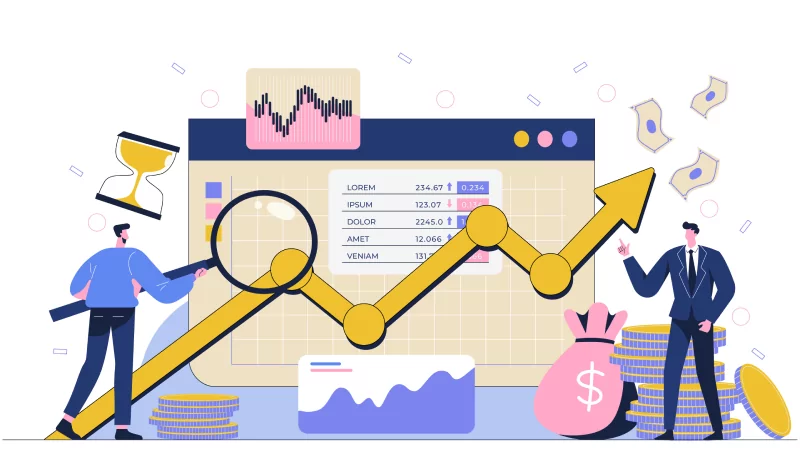In-depth analysis of cryptocurrency markets and strategies - ASCN

Cryptocurrencies are digital assets built on blockchain technology — a system that keeps track of transactions without any central authority. It’s all decentralized, transparent, and theoretically immune to manipulation. Bitcoin, launched in 2009, was the first of its kind and sparked a financial revolution. Fast-forward to today, and there are thousands of coins and tokens — from Ethereum to stablecoins like USDT.
People use crypto for payments, investments, and decentralized finance (DeFi). Prices move based on demand, news, and broader market trends. By 2025, the total crypto market cap passed the $2 trillion mark. But beginners should remember one thing: volatility is brutal. Prices can surge or collapse by 50% in a single week.
ASCN.AI evaluates cryptocurrencies using on-chain data. Say you type in: “Explain Bitcoin tokenomics in simple terms.” ASCN.AI replies: “Bitcoin has a fixed supply of 21 million coins with halving every four years, reducing inflation and supporting long-term growth.” Handy, especially when you’re sorting through projects and picking where to invest.

A Closer Look at Crypto Exchanges
Crypto exchanges are where the action happens — buying, selling, and swapping coins. There are two main types: centralized (CEX) and decentralized (DEX). CEX platforms like Binance are user-friendly and liquid. DEXs built on Ethereum let you trade without KYC but require paying gas fees.
The exchange market keeps expanding — by 2025, daily trading volumes had crossed $100 billion. Exchanges make money through trading fees, usually between 0.1% and 0.5%. Traders also get built-in analysis tools — charts, indicators, and sometimes AI-based insights.
Major Exchanges and What Sets Them Apart
Binance dominates trading volumes. It supports over 600 cryptocurrencies and offers futures with up to 125x leverage. Spot trading fees hover around 0.1%. Coinbase is perfect for newcomers — simple interface, U.S. regulation, and insured funds — but higher fees (0.5%–4.5%).
Bybit focuses on derivatives and has zero funding fees. Kraken wins on security — about 95% of assets sit in cold wallets. In Russia, OKX and Huobi are favorites thanks to ruble support and low withdrawal fees.
To compare exchanges quickly, use ASCN.AI. For example, prompt it with: “Compare Binance and Bybit fees for ETH/USDT trading.” It might say: “Binance: 0.1% taker, Bybit: 0.055% for futures. Bybit is cheaper for high-volume traders (over $1 million).” That’s the kind of insight that shapes strategy.

How to Choose an Exchange
It depends on what you’re after. For investors, Coinbase is a solid pick with insured assets. Active traders prefer Binance for its liquidity. Always check regulation, security (2FA, insurance funds), and asset support. And yes — read reviews on Trustpilot before jumping in.
Risks are real. In 2024 alone, hackers stole around $1.7 billion. Stick with exchanges that pass audits — CertiK, for example. ASCN.AI can help here too: try “What are the risks of OKX in 2025?” It might answer: “Strong regulation in Dubai, keep an eye on KYC updates. No major hacks in the past year.” Insights like that help you dodge unnecessary mistakes.
Wikipedia gives you the basics on crypto, but for live data, ASCN.AI is miles ahead.
Investment Strategies
Crypto investing is not a guessing game — it needs a plan. The usual suspects are holding, DCA (dollar-cost averaging), and arbitrage. According to Chainalysis, the average portfolio return in 2025 hit around 45% annually.
Diversification still rules: maybe 50% in BTC/ETH, 30% in altcoins, 20% in stablecoins. Keep an eye on news — exchange listings alone can push a coin’s price up by 20–50%.
Long-Term Investing
Long-term means buying and holding for years. Bitcoin, for instance, climbed from $10,000 in 2020 to around $100,000 by 2025. A common rule of thumb: invest 10–20% of your capital in the top five coins.
Staking offers passive income — Ethereum yields about 4–6% APY. Use cold wallets like Ledger to keep your assets safe. With ASCN.AI, you can fine-tune your portfolio. Try: “Suggest a long-term portfolio for $10,000.” The reply might be: “40% BTC, 30% ETH, 20% SOL, 10% USDT. Estimated annual return 30% based on historical data.” Not investment advice — but a solid starting point.

Trading and Tactics
Trading covers day and swing strategies. Some go for scalping on one-minute charts, others use RSI to time entries (buying when RSI < 30). By 2025, about 70% of traders rely on bots to automate their setups.
Arbitrage between exchanges can yield 1–5% per trade. Say SOL costs slightly less on KuCoin than on Binance — that’s a quick profit window. ASCN.AI can even find those for you: “Check BTC arbitrage across top exchanges.” It might respond: “0.5% spread between Binance and Kraken — buy on Kraken, sell on Binance.” Efficient, right?
For a quick market scan, ask: “Technical breakdown of ETH/USDT on 1H.” ASCN.AI will throw out support levels, targets, and stop-losses. Basically, an AI trading assistant on demand.
Risks and How to Handle Them
The crypto market can be ruthless — volatility, sudden regulation changes, rug pulls. Losses from hacks reached $2 billion in 2024. DEX liquidity issues and emotional trades only add to the chaos.
Mitigate risk by diversifying, using stop-losses (5–10%), and researching projects — tokenomics, teams, audits. Avoid the FOMO trap; buy dips, not spikes.
ASCN.AI can flag shady tokens: prompt it with “Risk analysis for token X.” You might get: “High rug-pull risk due to unlocked LP. Anonymous team — avoid investment.” That’s the kind of alert that saves real money.
Keep 90% of your assets in trusted wallets like MetaMask. Update software regularly. DeFi’s getting safer thanks to audits, but staying cautious never hurts.
A Practical Guide to Crypto Trading
Here’s what getting started actually looks like.
Register on an exchange, pass KYC, and deposit some funds — say $100 to start. Pick a pair like BTC/USDT and open your first trade. Keep an eye on charts via TradingView.
Basic steps:
-
Learn key indicators (MA, MACD).
-
Set up a wallet for withdrawals.
-
Start small — 1% of capital per trade.
-
Keep a trading journal.
ASCN.AI can guide you through it: try “Step-by-step: how to buy ETH on Binance for a beginner.” The answer: “1. Sign up and verify. 2. Deposit USDT via card. 3. Buy ETH on spot. 4. Withdraw to your wallet. Fee: 0.1%.” Saves time and prevents rookie mistakes.
For pros, ASCN.AI integrates with crypto agents for automated analysis and strategy building. Some traders even cite examples where ASCN correctly flagged on-chain signals ahead of a 20% Bitcoin move.
A $29 monthly subscription unlocks live, granular blockchain data that typical AI models like ChatGPT just can’t access. Start with something simple like “Analyze today’s crypto market,” and you’ll get a real-time overview for smarter trades.


